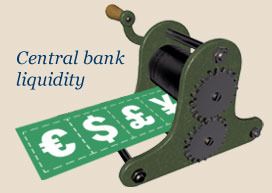An Examination of Central Banking
Richard Salsman submitted a two-part essay in 2013 that sought to dismantle the concept of central banking as we know it. Why take such an extreme stance on this measure? Central banking plays a crucial role in financial policy, one that is open to abuse, Salsman argues, and should be immediately dismantled.
Central banking is akin to the money lenders of the past, except that the government no longer owes debts to others navigate here. The debt is owed to the people, which we refer to collectively as “government debt.”
 Another way to view central banking is to see it as an additional branch of government. Central banking is like a tool of government spending, which some argue makes it a tool to correct for market failures. The idea being that the fed holds money in reserve that it can spend when it sees fit in order to stimulate the markets.
Another way to view central banking is to see it as an additional branch of government. Central banking is like a tool of government spending, which some argue makes it a tool to correct for market failures. The idea being that the fed holds money in reserve that it can spend when it sees fit in order to stimulate the markets.
Central banking is open to extreme abuse. It’s akin to printing money, and that means the government can essentially take on infinite debt. However, printing money reduces its scarcity, which reduces its value. Thus the short term problem is solved, the debt is paid, but the costs of doing so are far greater in terms of future losses.
The policies that the Fed sets forth dictate how America’s financial institutions respond to the financial needs of Americans. While some of this legislation has created positive movement, like the Federal Housing Administration, there is room for abuse and overspending.